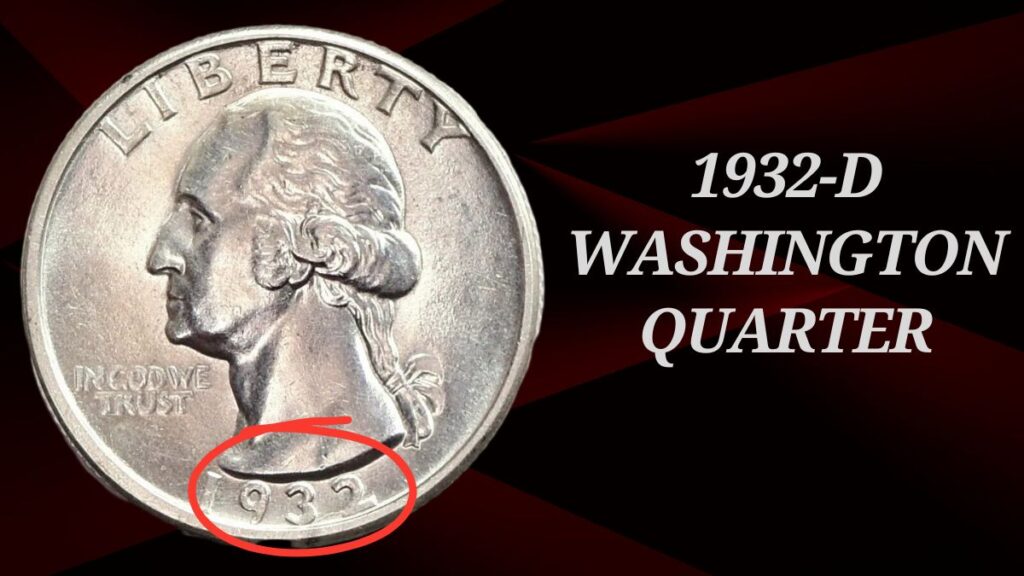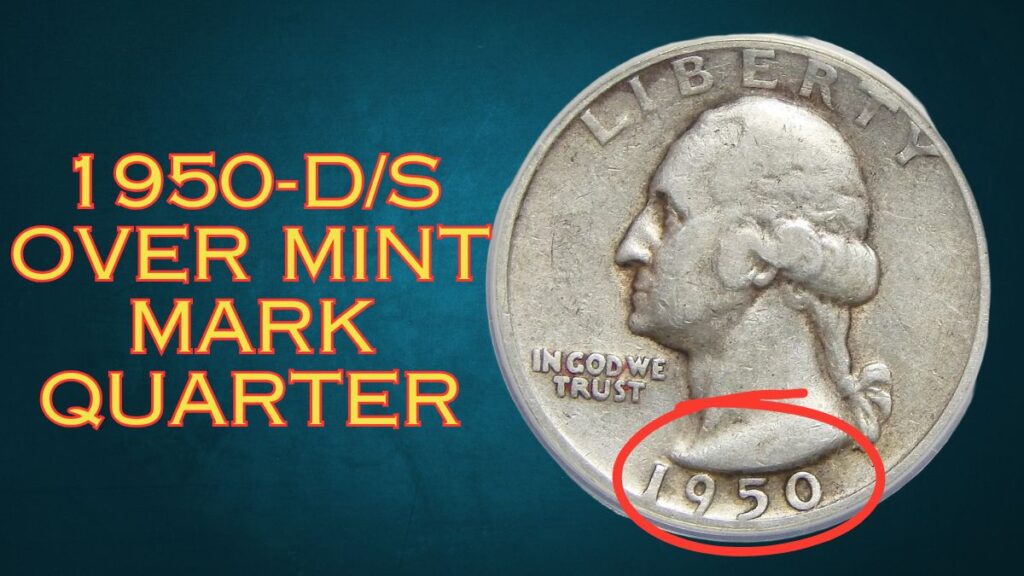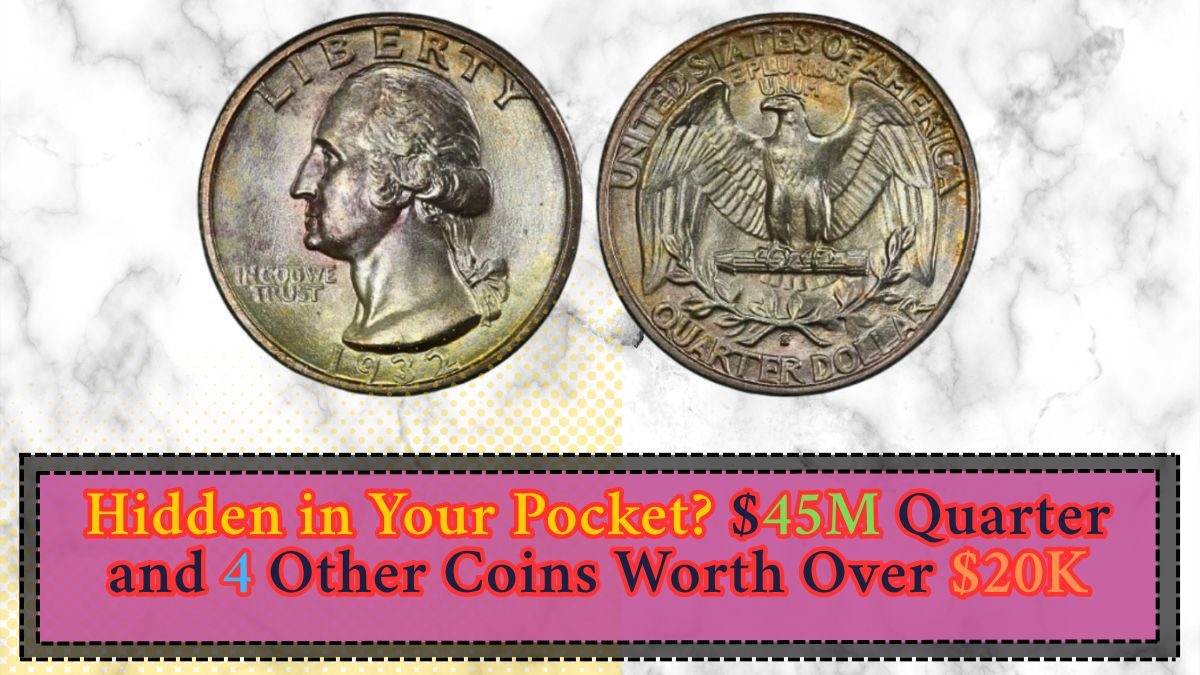A Quarters Worth a Fortune: Get a quarter in your pocket that can see you through life! The odd ones are what coin collectors look out for, and one of them is the 1976 Bicentennial Quarter. While the majority of quarters are worth only 25 cents, some rare ones can run a person a few dollars.
[also_read id=”165″]
We’ll show you the $45 million Bicentennial Quarter and four other quarters worth over $20,000. You’ll discover how to identify valuable quarters, why they’re so valuable, and where you can profit from them. Let’s begin!
| Feature | Details |
|---|---|
| Most Valuable Bicentennial Quarter | Estimated at $45 million due to minting errors and silver composition |
| Other Rare Quarters Worth Over $20,000 | 1932-D, 1932-S, 1943-S Silver Quarter, 1950-D/S Overmintmark Quarter |
| Factors That Increase Value | Minting errors, metal composition, condition, low mintage |
| Where to Sell Rare Coins | Auctions, eBay, coin dealers, grading services |
| Official Resources | U.S. Mint |
The finding of a rare quarter is thrilling and significant! While the majority of the quarters are ordinary inscription values, there are a few that are worth millions. The $45 million bicenantic quarter is an ultra-event, but other quarters may be lying in your collection right now with values of more than $20,000. Always make sure to check for mint errors, silver content and mint to ascertain the value of a coin
If you think you have a precious quarter, you can professionally grade it and sort it. Who knows? You might have good fortune!
Why is bicentical quarter worth so much?
Bicentantily Quarter in 1976 was produced on the occasion of the 200th anniversary. Quarters are common and even used today, but an error coin is rare and has an approximate value of $ 45 million. Here’s why:
1. Mint failure
- Double Dye Oberg: The appearance is a little double, therefore very scarce.
- Strike at off-level: Some biceteentell quarters in the center were struck, therefore worth.
- Broad strique error: coin struck without collar, therefore wide diameter.
- Clipped Planchet: Some coins were struck with part of it missing or missing plans.
2. Silver
- Most of the two-year quarters were produced using copper nickel, but others accidentally had 40% silver planchers.
- If you have a bicetenial silver quarter, it will be worth thousands!
- Magnet test: Silver is not magnetic, but normal quarters will weakly attract a strong magnet.
3. Condition is all
- Uncontrolled or coin coins are far more valuable than coined quarters.
- PCorce or NGC (Professional Coin Grading Service or Numismatic Guaranty Corporation) make a huge difference in professional grading cost.
- Coins with MS-65 or high grading will get high prices.
4 quarters of second are valued higher than $ 20,000
Do not worry if you do not own a Bicentan quarter! Four alternative quarters can be found here that might be valued at millions.
1932-D Washington Quarter

- Mintage: 436 800 (very low)
- Value: Higher than $ 20,000 in safe position
- Why it is valuable: 1932-D quarter experienced lowest mining operation than all the Washington quarters, and it hardly got.
- What to search for: a sharp “D” minter beneath the eagle.
1932-S Washington Quarter
- Mintage: 408 000
- Price: up to $ 25,000
- Why this is valuable: Another low -minor coin collectors were in high demand.
- Pro Tip: Search for quick information on Washington’s hair and sharp edges.
1943-S Silver Washington Quarter
- Mintage: Unknown number hits on silver planchers
- Price: Over $ 20,000
- Why it is valuable: errors were accidentally hit on Silver Planchers, which made it a variation.
- Weight test: Silver quarters are heavier than copper nickel.
1950-D/S Over mint mark Quarter

- Value: up to $ 22,000
- Why it’s valuable: S is authorized on a de mintmark, thus it is a rare mint error.
- Need for magnification: Overposting is light, but there is a magnification visible under glass.
How to spot a rare quarter
Step 1: Examine Date and Mintmark
- Check after 1932, 1943, 1950 or 1976 Bicentanial Quarter.
- Mintmark D (Denver) or S (San Francisco) can be expensive.
Step 2: Search for mint mistakes
- Double dye: Weaker double letter or number.
- Strike on off-level: Image is blurry.
- Over mint mark: Second mint mark legitimizes second.
- Error errors: Peel or flaky metal sheets.
Step 3: Metal Cum
- Silver quarters are heavier than copper-nickel ones.
- Test with a magnet – genuine silver won’t attract a magnet.
Step 4: Classes that
- PCGS or NGC can ensure the value of your coin.
- Good quality coins are paid the highest prices.
Where to sell your rare quarters
[also_read id=”80″]
- Online Market Place
Ebay – directly sells to collectors.
Heritage Auction – Professional Auction House.
Good collection – another excellent online market. - Local coin dealers and stores
Certified dealers can make fair assessment.
Visit multiple stores to get best value. - Coin Grading Services
PCGS and NGC will grade and classify your coins.
High quality is for high value of auction.
FAQ’s
Q. How do I know whether my Bicentennial Quarter is silver?
A. Check the edge of the coin – if all silver and no copper, then it’s a 40% silver quarter.
Q. Are all Bicentennial Quarters valuable?
A. No, most are worth only 25 cents. Only rare errors or silver ones are valuable.
Q. How do I best store rare coins?
A. Store your coins in coin holders, airtight capsules, or professional slabs to avoid damage.
Q. Can I clean my old coins so they will be worth more?
A. No! Coins lose value when they are cleaned. Leave them alone and have them graded instead.
